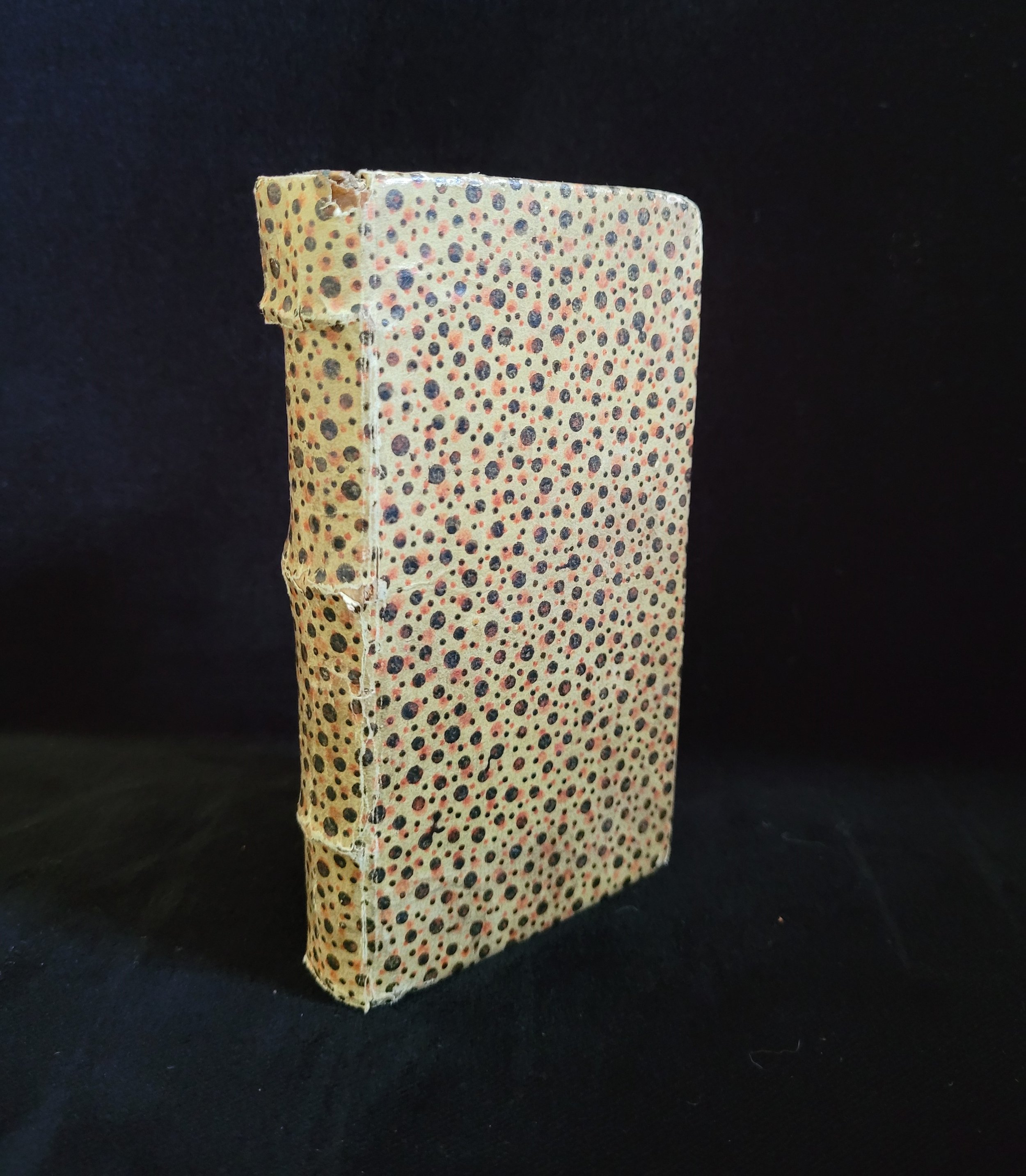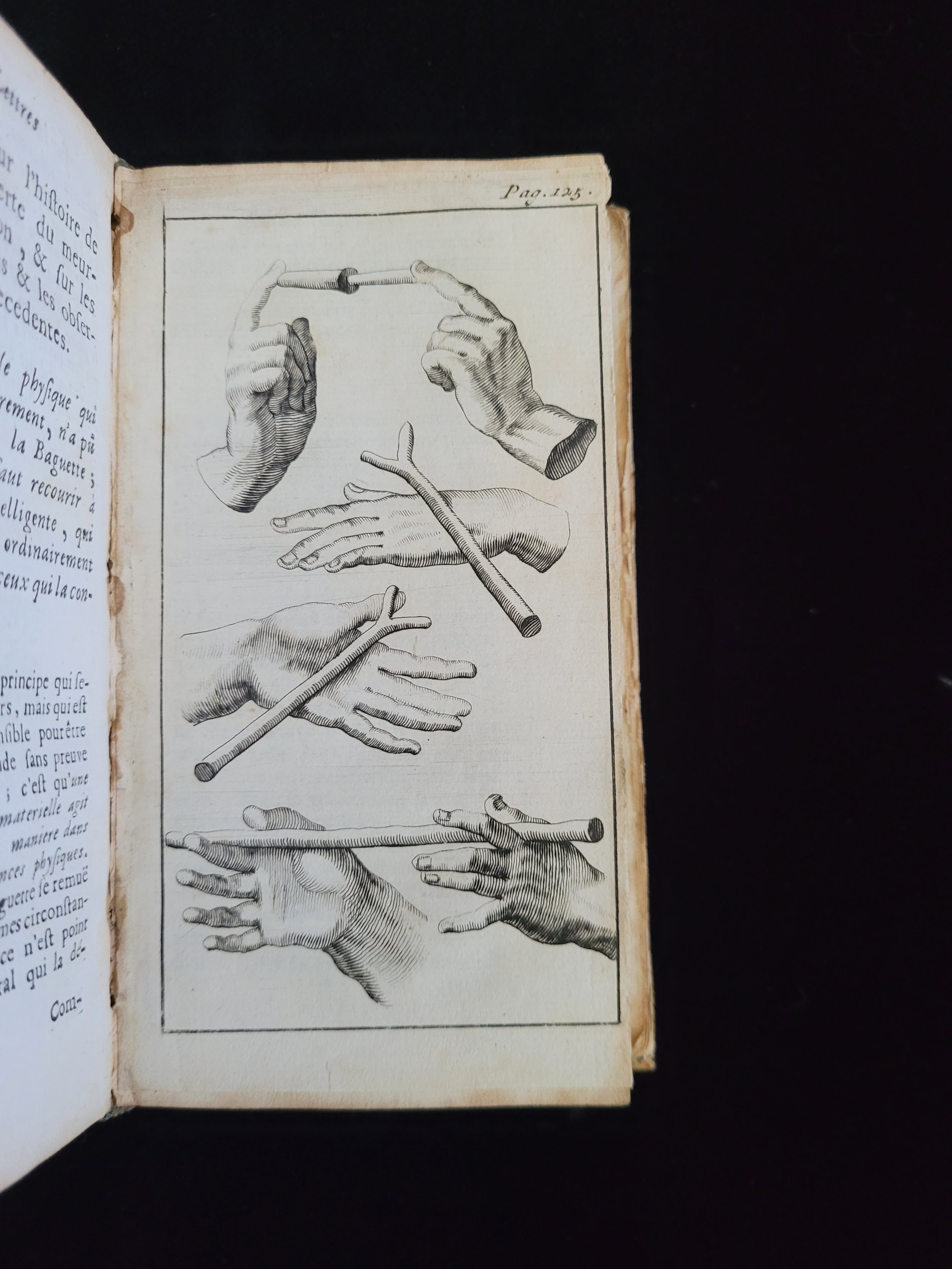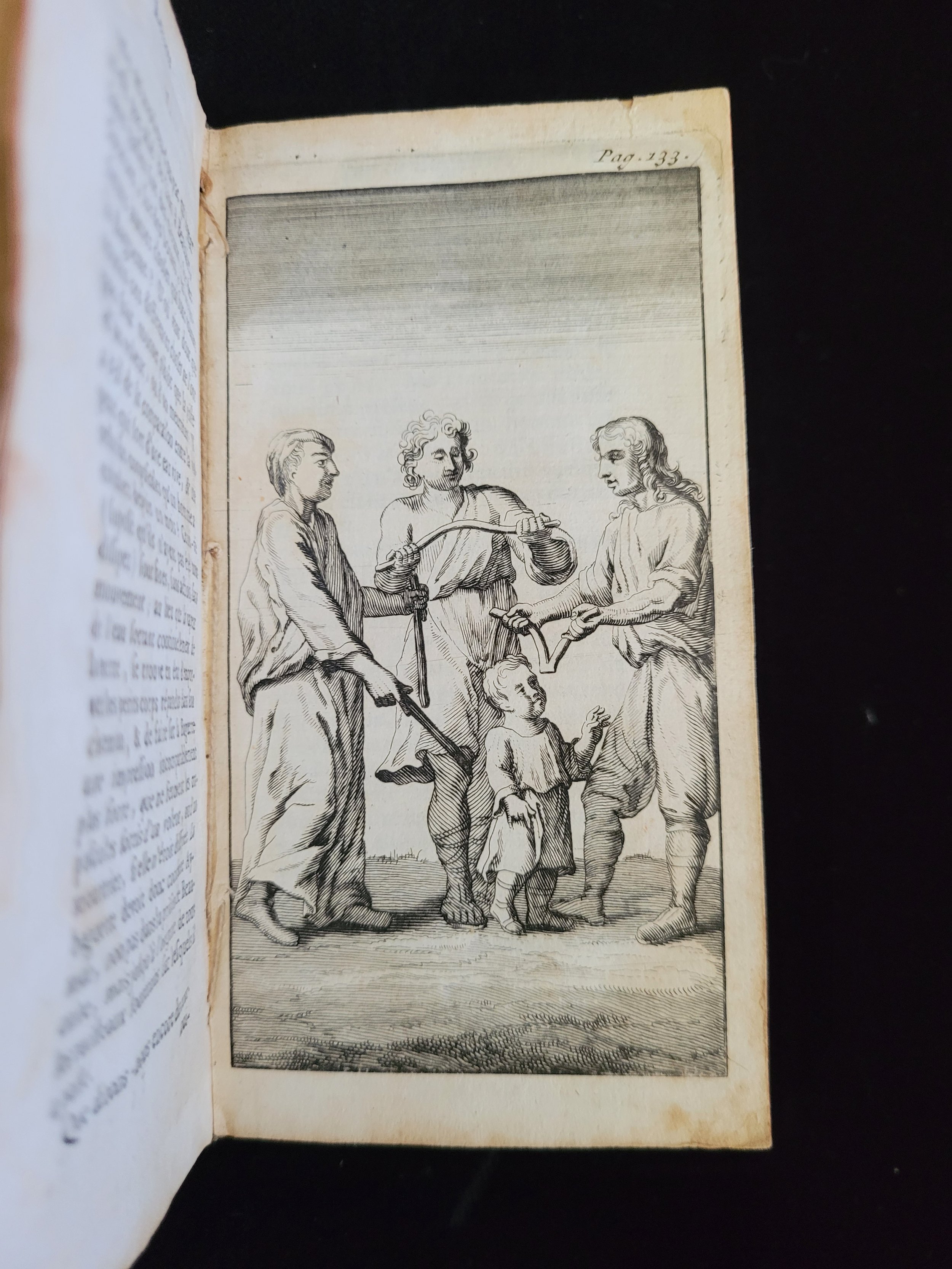 Image 1 of 3
Image 1 of 3

 Image 2 of 3
Image 2 of 3

 Image 3 of 3
Image 3 of 3




[VALLEMONT, Abbé de] [Pierre le Lorraine]. Suite de la Physique Occulte...
[VALLEMONT, Abbé de] [Pierre le Lorraine].
Suite de la Physique Occulte Où Traité de la Baguette Divinatoire Où Lettres qui Decouvrens L’illusion Des Philosophes Sur La Baguette Et Qui Detruisent Leurs Systemes.
Paris: Jean Roudot, rue S. Jaques, au Soleil d’or, 1696
12mo., attractive decorative Italian paste-paper binding, with spots in red and black; all edges red; marbled endpapers; pp. [xxxi], 255, [i]; two plates facing p. 124 and 132; astrological diagram to p.92; along with several tail pieces; previous ownership name of Mattieu Hellin [?] scored through to the title page; some cracking along spine; previous ownership name to verso of ffep; an excellent copy, otherwise.
A pocket treatise on the art of the divining rod and the art of dowsing, which takes into account an examination of how it may be applied to criminal detection. The two illustrations show the numerous ways of how to hold the rod, together with a scene showing three figures and a child using them.
Born in 1649, Pierre Le Lorrain, better known as Abbé de Vallemont, was a French physicist and writer. His interest in Numismatics led him to consider dowsing as a source for finding metals and coins, and his interests later turned to the detection of criminals, who, he claimed, could be found by ignoring the five senses and instead tuning into the echo of past activity the objects associated with them, like a lingering smell which could be followed. Despite the fact it was roundly condemned by the institutional Catholic Church as ‘witchcraft’, dowsing flourished in the 17th century, and Lorrian’s comprehensive account of all the methods of dowsing that were in use at the time proved extremely popular. Perhaps to avoid condemnation, Lorrian took up orders and eventually became a doctor of theology, although he did suffer criticism and abuse for much of his working life.
OCLC reports two copies only of this edition: Duke & Berlin. Not in COPAC.
[VALLEMONT, Abbé de] [Pierre le Lorraine].
Suite de la Physique Occulte Où Traité de la Baguette Divinatoire Où Lettres qui Decouvrens L’illusion Des Philosophes Sur La Baguette Et Qui Detruisent Leurs Systemes.
Paris: Jean Roudot, rue S. Jaques, au Soleil d’or, 1696
12mo., attractive decorative Italian paste-paper binding, with spots in red and black; all edges red; marbled endpapers; pp. [xxxi], 255, [i]; two plates facing p. 124 and 132; astrological diagram to p.92; along with several tail pieces; previous ownership name of Mattieu Hellin [?] scored through to the title page; some cracking along spine; previous ownership name to verso of ffep; an excellent copy, otherwise.
A pocket treatise on the art of the divining rod and the art of dowsing, which takes into account an examination of how it may be applied to criminal detection. The two illustrations show the numerous ways of how to hold the rod, together with a scene showing three figures and a child using them.
Born in 1649, Pierre Le Lorrain, better known as Abbé de Vallemont, was a French physicist and writer. His interest in Numismatics led him to consider dowsing as a source for finding metals and coins, and his interests later turned to the detection of criminals, who, he claimed, could be found by ignoring the five senses and instead tuning into the echo of past activity the objects associated with them, like a lingering smell which could be followed. Despite the fact it was roundly condemned by the institutional Catholic Church as ‘witchcraft’, dowsing flourished in the 17th century, and Lorrian’s comprehensive account of all the methods of dowsing that were in use at the time proved extremely popular. Perhaps to avoid condemnation, Lorrian took up orders and eventually became a doctor of theology, although he did suffer criticism and abuse for much of his working life.
OCLC reports two copies only of this edition: Duke & Berlin. Not in COPAC.
[VALLEMONT, Abbé de] [Pierre le Lorraine].
Suite de la Physique Occulte Où Traité de la Baguette Divinatoire Où Lettres qui Decouvrens L’illusion Des Philosophes Sur La Baguette Et Qui Detruisent Leurs Systemes.
Paris: Jean Roudot, rue S. Jaques, au Soleil d’or, 1696
12mo., attractive decorative Italian paste-paper binding, with spots in red and black; all edges red; marbled endpapers; pp. [xxxi], 255, [i]; two plates facing p. 124 and 132; astrological diagram to p.92; along with several tail pieces; previous ownership name of Mattieu Hellin [?] scored through to the title page; some cracking along spine; previous ownership name to verso of ffep; an excellent copy, otherwise.
A pocket treatise on the art of the divining rod and the art of dowsing, which takes into account an examination of how it may be applied to criminal detection. The two illustrations show the numerous ways of how to hold the rod, together with a scene showing three figures and a child using them.
Born in 1649, Pierre Le Lorrain, better known as Abbé de Vallemont, was a French physicist and writer. His interest in Numismatics led him to consider dowsing as a source for finding metals and coins, and his interests later turned to the detection of criminals, who, he claimed, could be found by ignoring the five senses and instead tuning into the echo of past activity the objects associated with them, like a lingering smell which could be followed. Despite the fact it was roundly condemned by the institutional Catholic Church as ‘witchcraft’, dowsing flourished in the 17th century, and Lorrian’s comprehensive account of all the methods of dowsing that were in use at the time proved extremely popular. Perhaps to avoid condemnation, Lorrian took up orders and eventually became a doctor of theology, although he did suffer criticism and abuse for much of his working life.
OCLC reports two copies only of this edition: Duke & Berlin. Not in COPAC.

